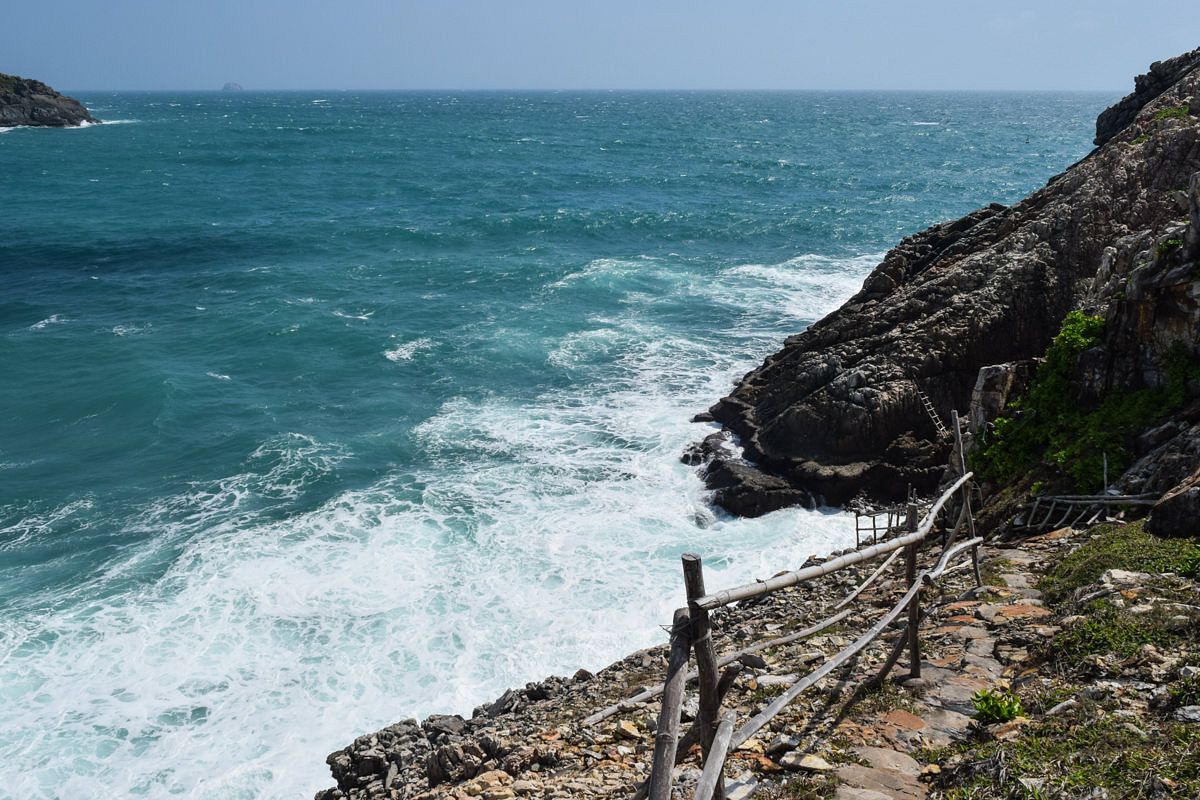Knowing the time of the tides is important here. The shallow waters around the 16 islands which make up the Con Dao Archipelago some 240 kilometers south of Saigon make for impressive golden beaches at low tide, as turquoise waves bring a myriad of seashells and coral pieces to shore.
It also means that at the end of a trek through the old-growth forests that blanket large parts of the islands, a secluded beach might be a few meters underwater.
“You need to be quick, the tide is changing,” cautioned the young park official. “Be careful that you come back in time.”
While Con Son, the main island in the group, has beaches in easy walking distance from the main town on its east coast, there are a number of some remote options that offer the more adventurous some great rewards, providing it isn’t high tide.
Dat Tham Beach, for example, is reached via a seven-kilometer walk across western Con Son’s hilly slopes. After parking the rented Honda motorbike at the modest trailhead, I ducked under a vine and entered the quiet of the forest. Thick foliage ensured shade on the trail but also blocked any breeze, and the humidity quickly ensured plenty of sweat. Thankfully the well-maintained trail makes for a pretty easy going trek, with concrete-buttressed granite rocks providing a smooth and simple route that winds northward around large trees and boulders.

Some of the many forest-shaded stairs on the trail to Dam Tre Bay.
Mine was the only motorbike when I entered the forest, and the silent stillness added to the feeling that I might have been the first person to have walked there in some time. Birdsong, scurrying lizards, and the crashing of macaques provided me with audio companionship, while before rounding one corner deep in thought I saw a wild civet for the first time in my life. A brief glimpse was all I got before it disappeared up a tree.
As the gloriously litter-free trail forked to the right and started descending towards the sea, the thought of having a golden beach all to myself added some pep to my stride. The amount of sweat increased, but the reward of the refreshing waters urged me on, over a modest stream, past a green trash can, finally towards the sea!
And as I was spat out of the tree cover, next to a brand-new, empty ranger building, the warning to check the tides came back to me. The trail abruptly stopped and the beach was nowhere to be seen - almost definitely submerged. Despite the warnings I had received, I had arrived at high tide, and my Robinson Carusoe dreams were dashed.

The small Catholic shrine in a cave just off the trail to Dat Tham Beach.
This was not a mistake I was going to repeat, and armed with a screenshot of the high and low tide times on my phone, I approached my next trek, to the remote northern Dam Tre Beach, with rather more caution.
The 1960s-era airport, built to support the prisons for which Con Dao is infamous, is book-ended by beaches. At low tide, this means vast expanses of empty sand, but at high tide, with the airport land off-limits, it means anyone caught north of the airport is cut off and faces a long wait, or a long swim.
The start is a 2.5-kilometer walk along a plastic and seashell-strewn beach. Staff from the Poulo Condor Boutique Resort were busy raking the sand in front of their exclusive sun loungers, but the rest of the beach was gloriously empty.

Resort staff sweeping the sand on Dong Beach, at the start of the hike to Dam Tre Bay.
At the far end of the beach, the trail rose steeply, but once again, it cemented its whole length, meaning that sandals were perfectly suitable.
Alone again, the peacefulness of the forest made for a much-needed contrast to Saigon's traffic chaos, only a 50-minute flight away.
The trail wound around trees and rocks, some bearing clear marks of the power tools used to break off the rocks necessary to construct the path. And once again, the forest cover abruptly ended at the sea. This time there was life, however: a permanent park ranger station and associated dogs and chickens, and a small community of swallow-nest gatherers. Bamboo handrails and ladders that these daring workers use to reach the nests criss-crossed the rocks, as the waves crashed violently below. Their simple shacks precariously perched on the exposed cliffs that form the mouth of Dam Tre Bay, and the similarities between the nest-hunters and the homes of their targets are rather striking.

Rickety bamboo handrails mark the routes taken by swallow nest collectors in Dam Tre Bay.
Everything was much more peaceful facing inland, with exposed rocks blocking the waves and leaving the water lapping at empty beaches. The remoteness and tranquility really did lead to a feeling that I was here on this island all by myself. The departure of a prop-jet aircraft, banking left over the bay as it headed for Saigon or Can Tho, was a cruel reminder that I was, in fact, not alone. It also brought back the warnings of getting back past the airport before the tide returned.
So back I walked, past the trees and rocks, towards the beach, my motorbike and the relative hustle and bustle of Con Dao's main town.
A VND60,000 ticket is needed daily for access to the 150-square-kilometer Con Dao National Park. Most trailheads are reachable by motorbike or taxi, and remember to bring snacks and plenty of water.
Peter Ford is a freelance journalist based in Cambodia. A former reporter at the now-closed Cambodia Daily, he writes on a wide range of topics from across Asia. Find him on Twitter @PeteaFord.















